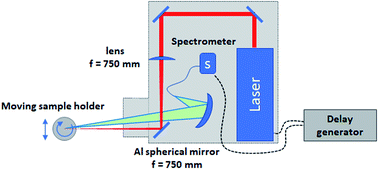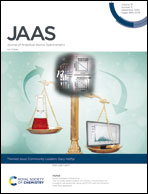Rapid chemical analysis of steel slag by laser-induced breakdown spectroscopy for near-the-line applications
Abstract
A laser-induced breakdown spectrometry (LIBS) system for rapid slag analysis near a steel process has been tested and evaluated. The system consists of a Quantel CFR YAG laser with repetition rate 10 Hz, pulse energy at 1064 nm 300 mJ, a 75 cm lens to focus the laser beam onto the sample, a spherical aluminum mirror in a near-colinear configuration to collect the plasma emission, and dual Avantes CCD spectrometers. The system also includes a rotating/oscillating sample holder to achieve averaging over a sufficiently large sample area (volume) in order to get a representative measurement of the rather inhomogeneous slag samples. It was found that signal averaging over several hundred laser pulses was needed in order to get a statistically robust measurement of the average intensities. A large number of slag samples analyzed by X-ray fluorescence (XRF) were used to calibrate the LIBS system, using a univariate method adapted from spark OES (ratio method). The quantitative LIBS results were verified against the XRF data, with overall excellent agreement for the major components CaO, MgO, SiO2, Al2O3, FeO and MnO. The repeatability and reproducibility of the LIBS quantitative results were investigated. It was found that the relative standard deviation (RSD) for the major components were 2–4 times higher for LIBS compared with XRF. These results are adequate for several near-the-line applications, but can probably be considerably improved. A near-the-line measurement campaign in a steel plant demonstrated that the system is well-adapted to the industrial environment. A comparison of spectra of hot (∼1200 °C) and cold slags indicates that the ionization temperature of the LIBS plasma increases with sample temperature. This shows that further work is needed to develop “transfer functions” from calibration performed at room temperature. A first investigation of the possibility to separate the content of metallic iron from iron oxide by a pulse distribution analysis (PDA) technique was carried out. The results are very promising, indicating that LIBS can be a fast and accurate technique for this purpose.

- This article is part of the themed collection: Community Leaders: Gary Hieftje


 Please wait while we load your content...
Please wait while we load your content...